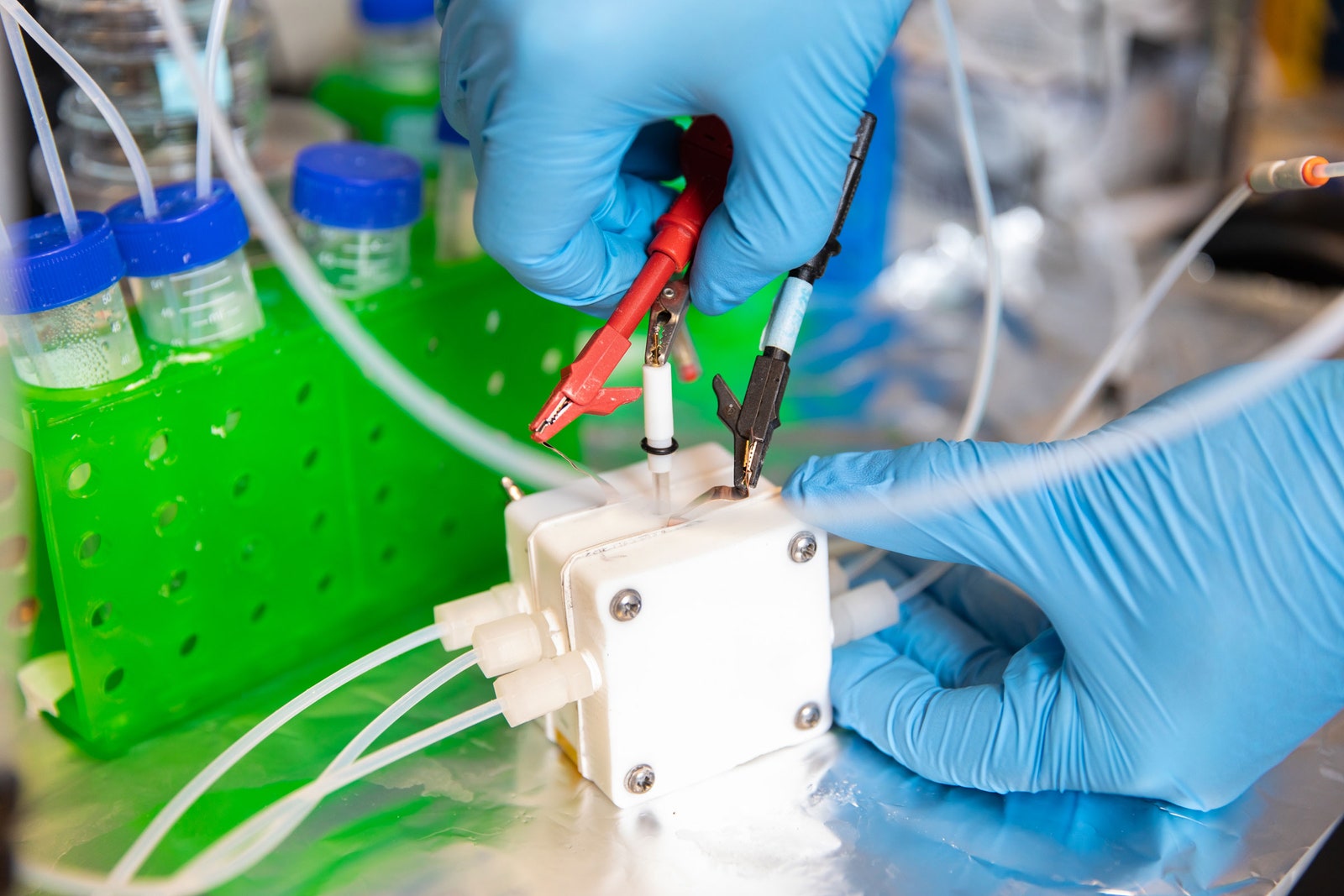At the University of Toronto, Ted Sargent runs a test kitchen of sorts. His team, composed of researchers and students, develops recipes, measures and mixes ingredients carefully, and then evaluates the aftermath. The concoctions mostly—if not always—turn out to be inedible.
Fortunately, though, flavor is not the point. They’re not making food. Sargent’s team cooks with carbon dioxide. Their goal is to invent recipes to “upgrade” the greenhouse gas into useful materials, says Sargent, an electrical engineer. Instead of releasing the pollutant into the air, or capturing and sequestering it underground, factories and power plants of the future could use renewable energy to convert the carbon dioxide into raw materials they could sell.
One promising class of recipes involves electrically zapping carbon dioxide with other reactants to transform it into the six-atom molecule ethylene, composed of two carbon atoms and four hydrogens. Ethylene is a raw material used to make common plastics, including those found in supermarket and Ziploc bags. “It’s about a $60 billion market,” says Sargent. “It’s a pretty valuable commodity chemical.”
But the real significance of Sargent’s work isn’t just the value of his recipes. It’s that he’s cooking with artificial intelligence. Sargent’s team discovered new ingredients for making ethylene by using new AI and supercomputer-driven techniques that have been gaining popularity among materials scientists in the past decade.
Sargent teamed up with Zachary Ulissi of Carnegie Mellon University, who specializes in using algorithms to invent new materials. Ulissi simulated 12,229 microscopic close-ups of 244 different crystals to zero in on the most promising candidates for making ethylene. In particular, they wanted to find materials that carbon monoxide molecules—which are produced from the breakdown of carbon dioxide—would stick to easily. Ulissi used a supercomputer to run a fraction of the simulations, a time-intensive task that would be impractical to complete for all 12,229 close-ups. Then, he trained a machine-learning algorithm with those supercomputing results, and that algorithm learned to make the remaining simulations quickly.
These computer-based methods provide researchers with a faster and more comprehensive strategy for discovering new materials. It can take two decades for scientists to discover a material and fine-tune it well enough for commercialization. Conventionally, says Ulissi, “it has been really difficult to search wide swaths of materials.” As the story goes, in the 1870’s, Thomas Edison tested more than 3,000 different materials to find the right filament for the first affordable incandescent light bulb. Ultimately, the filament that reigned in the next century was made of tungsten—a material Edison never even tried.

.jpg)